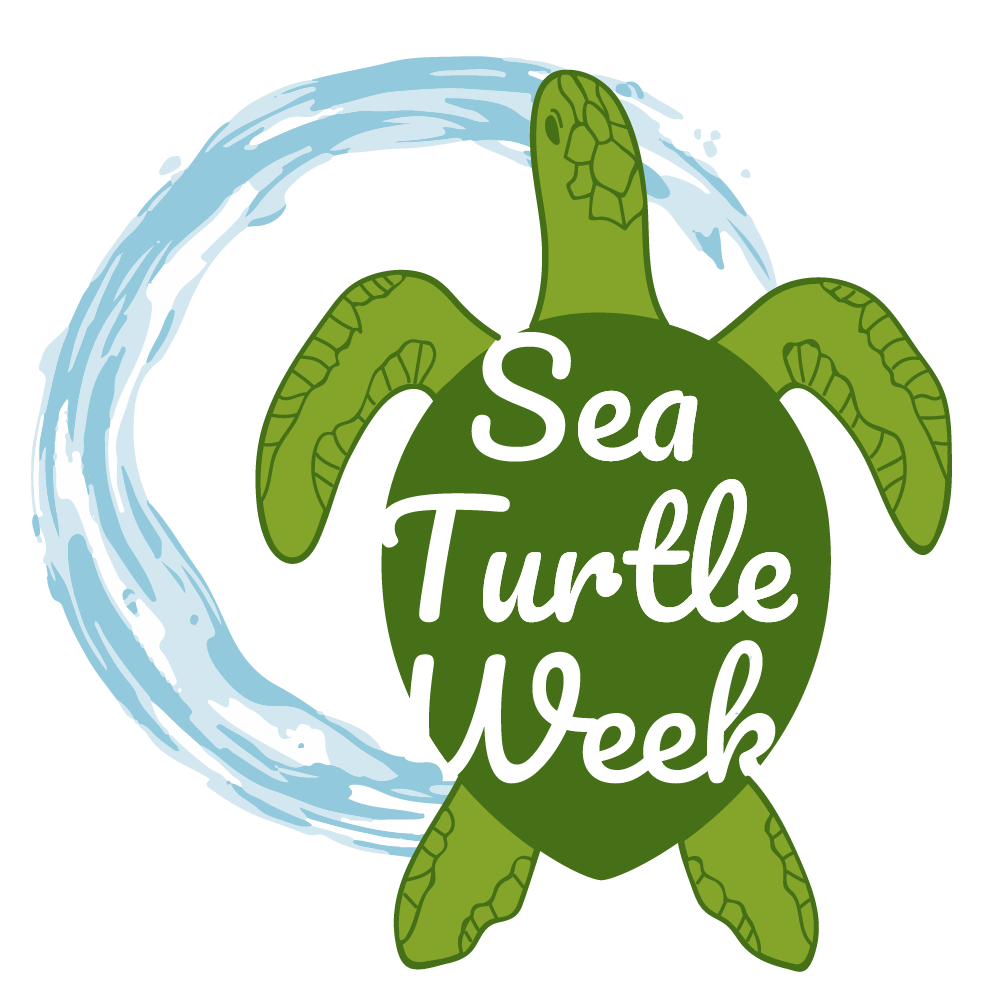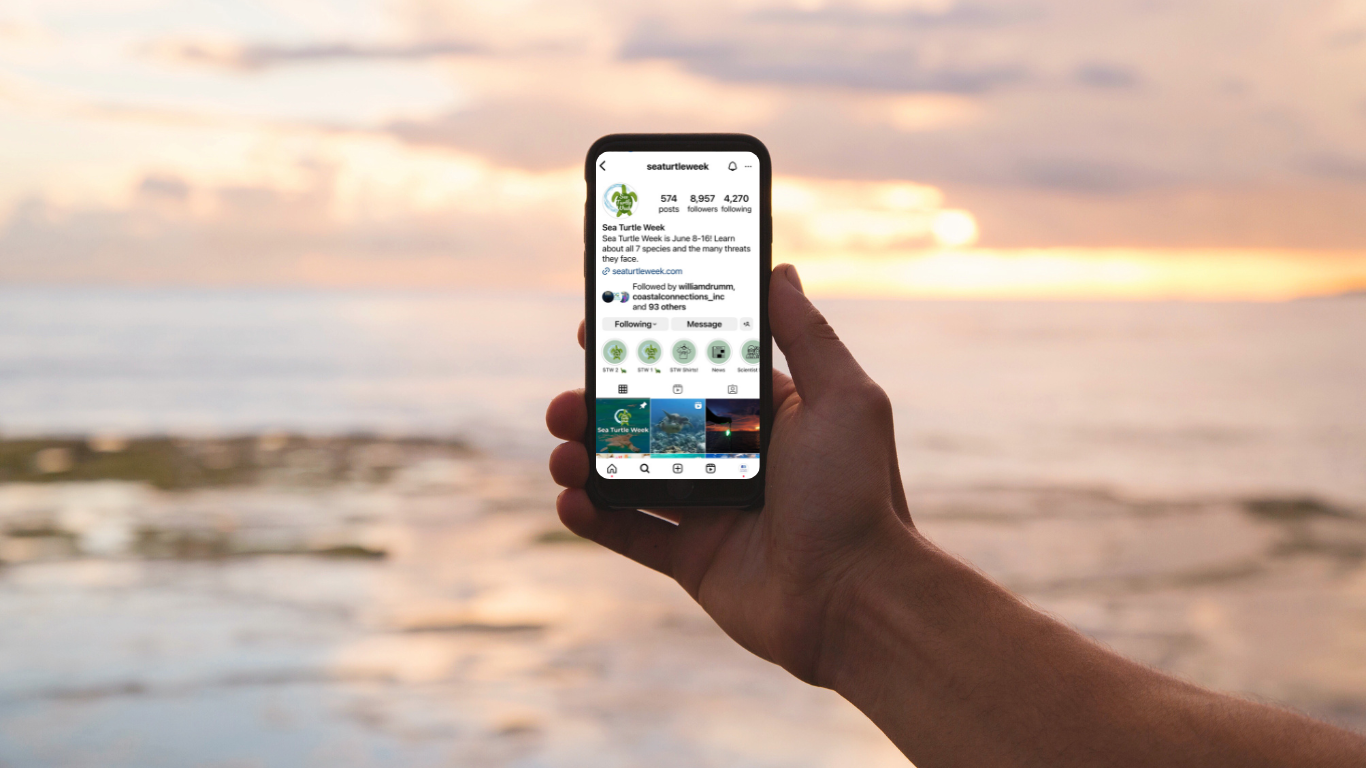Content for Sharing
The graphics below are free for use across your social media networks!
Don’t forget to use the hashtag #SeaTurtleWeek with all your posts throughout the week so we can track our reach.
Additional social media content can be found on the species and threats tab, as well as throughout the site.
Countdown Graphics
Promotional Graphics (English and Spanish)
Cartoon Graphics
World Ocean Day
Species Graphics
Threats Graphics
World Sea Turtle Day
Sample Social Media Text
World Ocean Day
#SeaTurtleWeek kicks off on June 8th with @WorldOceanDay! Dive into resources on ocean conservation, find fun events, and more at www.worldoceanday.org. #WorldOceanDay #Protect30x30 #OceanClimateAction #SeaTurtleWeek
Species of the Day
Celebrate Flatback Day on June 9th! These unique sea turtles enjoy feasting on jellyfish, sea cucumbers, and soft corals. Discover more about flatbacks at www.seaturtleweek.com/flatback-day. #SeaTurtleWeek
On June 10th, we honor Kemp’s Ridleys, one of the most endangered sea turtle species. Learn about these turtles and the impact of ocean pollution at www.seaturtleweek.com/kemps-ridley-day. #SeaTurtleWeek
June 11th is Olive Ridley Day! Known for their mass nesting events called “arribadas,” these turtles can gather in the tens or hundreds of thousands. Learn more about Olive Ridleys at www.seeturtles.org/olive-ridley-turtles. #SeaTurtleWeek
Celebrate Loggerhead Day on June 12th! Adult loggerhead sea turtles can reach 4ft (1.2m) in length and weigh between 200-400lbs (90-180kg). Learn more about these incredible creatures at www.seaturtleweek.com/loggerhead-day. #SeaTurtleWeek
June 13th is Hawksbill Day! Found in coral reefs worldwide, hawksbill turtles help maintain the balance by eating sponges that could otherwise outcompete corals. Discover more about hawksbills at www.seaturtleweek.com/hawksbill-day. #SeaTurtleWeek
On June 14th, we celebrate Green Sea Turtle Day! Primarily herbivores, green sea turtles munch on seagrass, algae, and seaweeds. Learn more about them at www.seaturtleweek.com/green-turtle-day. #SeaTurtleWeek
Join us on June 15th for Leatherback Day! These giants of the sea turtle family can grow 4-8ft (1.2-2.4m) in length and weigh up to 2,000lbs (900kg). Learn about these gentle giants at www.seaturtleweek.com/leatherback-day. #SeaTurtleWeek
Threat of the Day
Development on the coast can affect sea turtles in many ways. Lights can deter nesting turtles and attract hatchlings, beach armoring and construction prevents nesting, and with development comes pollution. Learn more about this how coastal development and tourism threatens sea turtles here: www.seeturtles.org/coastal-development #SeaTurtleWeek
Sea turtles are vulnerable to ocean pollution at all stages of life, from eggs to hatchlings to juveniles to adults. Pollutants include things like toxic metals, pcb's, petroleum products, and agricultural and industrial runoff of contaminants such as fertilizers, chemicals, nutrients, and untreated waste. Learn more about how pollution affects sea turtles: www.seeturtles.org/ocean-pollution #SeaTurtleWeek
One of the top threats to sea turtles is consumption of their eggs and meat. In most places, consuming sea turtles or their eggs is illegal but a thriving black market exists around the world due to the belief that their eggs are aphrodisiacs. Learn more about this threat here: www.seaturtleweek.com/consumption #SeaTurtleWeek
One of the biggest threats to sea turtles is getting caught in fishing gear. In one study, an estimated 2.5 million turtles were caught in fisheries around the world over a 20 year period. Learn more about this threat here: www.seeturtles.org/fisheries-bycatch #SeaTurtleWeek
Hawksbill turtles are considered by many to be the most beautiful of sea turtles. Unfortunately this beauty is also the primary reason they are critically endangered as their shells are used to make jewelry and other products. Learn more about hawksbills here: www.seeturtles.org/too-rare-to-wear #SeaTurtleWeek
Did you know that climate change poses a significant threat to sea turtles? Rising sea levels are submerging nesting beaches, warmer waters are damaging coral reefs, and hotter sand is altering their sex ratios. Learn more at https://www.seaturtleweek.com/climate-change. #SeaTurtleWeek #ClimateChange
Plastic can affect sea turtles at all life stages. Plastic on the beach can increase the sand temperature which impacts the sex ratio of sea turtles eggs in a nest. Hatchlings on the beach can become trapped in plastic litter as they make their way to the ocean. Juvenile and adult sea turtles can mistake plastic for food, leading to potential blockages in their digestive system which may prevent them from eating. Learn more about how plastic impacts sea turtles here: https://www.seaturtleweek.com/pollution #SeaTurtleWeek
World Sea Turtle Day
Happy #WorldSeaTurtleDay! 🌊🐢 Discover simple ways you can make a difference in the lives of sea turtles every day! Our resilient ocean friends need our support to ensure they flourish for future generations. Learn more at www.seaturtleweek.com/help. #SeaTurtleWeek

































































